If you are a plant collector, like I am, you will at some point come to the sobering conclusion that only a finite number of plants can be squeezed into each square foot of your garden space. Human nature dictates that you will try to fit more in anyway, only to be frustrated as your plants succumb to overcrowding and eventual death. However, there may be hidden spots waiting for transformation into something unique and beautiful.
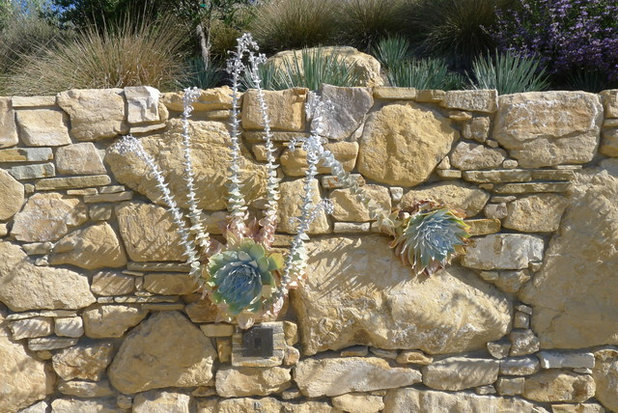
Jeffrey Gordon Smith Landscape Architecture
Perhaps the current fad of vertical gardens is a bit too grand for your aesthetic. If you prefer something a bit subtler and more natural-looking, consider planting in rock walls or in narrow spaces between boulders. All that is required is a small crevice, a bit of knowledge about microclimates and plants, and some ingenuity.
Shown: Dudleya
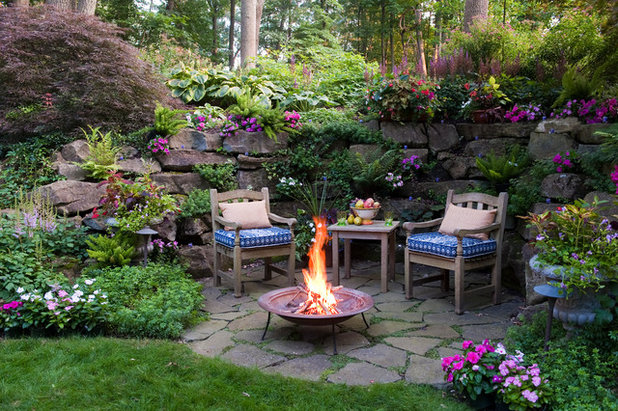
Pennsylvania Landscape & Nursery Association
Planting in crevices can be a simple statement of appreciation for plant form and texture, as shown in the previous photo, or a celebration of color and exuberance, as shown here. You may look for opportunities in existing structures or incorporate structures into plans for that next project.
To avoid disappointing results, it is imperative that you take careful note of your climate and microclimates and find suitable plants to them.
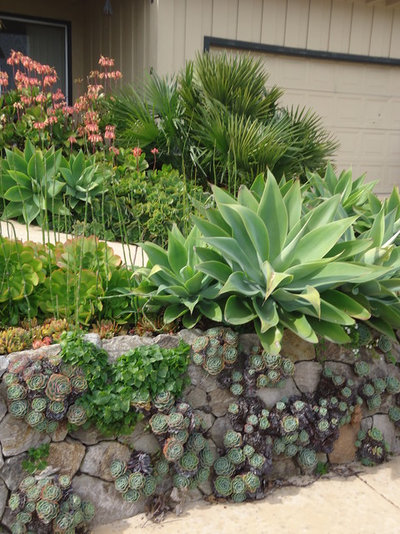
Schwartz and Associates Landscape Architecture
Succulents. If your crevice is sited in a warm, dry, sunny location, succulents such as these Echeverias may be a beautiful and logical choice.
Succulents are unmatched for their variety of colors, shapes and textures. The fact that a sunny wall absorbs and radiates heat makes it a microclimate well suited for many of them.
Be sure to pay attention to the cold hardiness on nursery plant tags, as some of the more commonly sold succulents are not suitable for colder climates.
Shown: Echeveria and
Agave attenuata
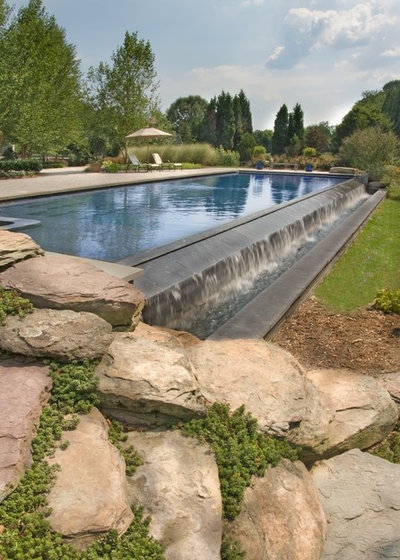
Lewis Aquatech
Sedums are another suitable succulent and are adapted to wider climatic conditions than Echeveria. They are generally easy to grow as long as they are planted in well-drained soil in a sunny location.
Once established, many varieties are quite drought tolerant, which makes them a perfect choice for planting in a stone wall or between boulders. Shorter creeping varieties will be better suited for this type of planting.
More great succulents
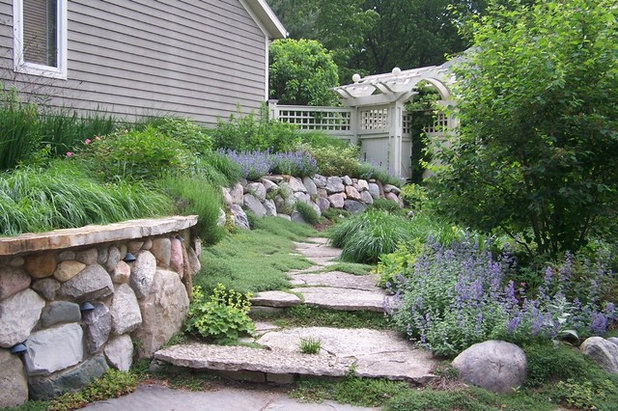
The Carter Rohrer Co.
Ground covers. Many of the shorter spreading plants generically referred to as ground covers are well suited for planting in wall crevices or between boulders.
Mediterranean plants are the best choice in sunny, dry locations. Consider
thyme (
Thymus spp
, USDA zones 5 to 9), prostrate rosemary
(
Rosmarinus officianalis ‘Prostratus’
, zones 7 to 10), and
cheddar pinks (
Dianthus gratianopolitanus, zones 3 to 9), among others. Plant in well-drained soil.
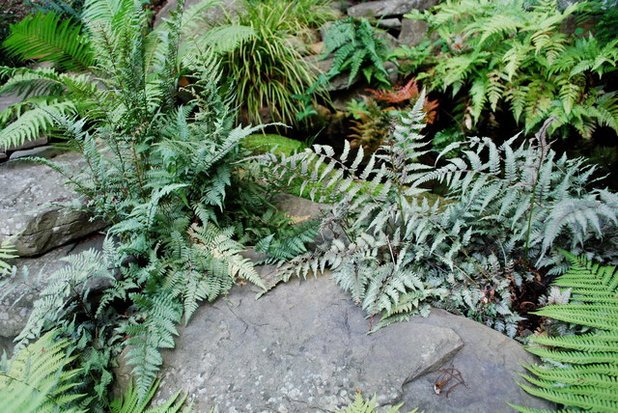
Jay Sifford Garden Design
Ferns. Shaded walls are also prime locations for crevice planting. Ferns are well adapted to this type of planting in locations with partial to full shade that are also moist and humid. A wall near a water feature is perfect. Choose a lower-growing fern species, such as
Japanese painted fern (
Athyrium niponicum var.
pictum, zones 3 to 8),
Korean rock fern (
Polystichum tsus-simense, zones 7 to 9),
tassel fern (
Polystichum polyblepharum, zones 5 to 8) or
Christmas fern (
Polystichum acrostichoides, zones 3 to 9).
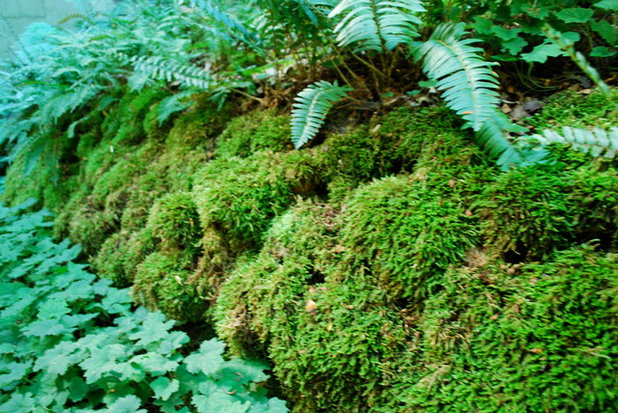
Jay Sifford Garden Design
Moss. Moss is also a great choice for planting in a moist, humid, shady location. This moss-covered wall was planted by owner David Benner more than 50 years ago.
Moss may be purchased from specialty nurseries or transplanted from another location in your garden. Please do not collect moss from native habitats. Keep moss consistently moist until it is well established.
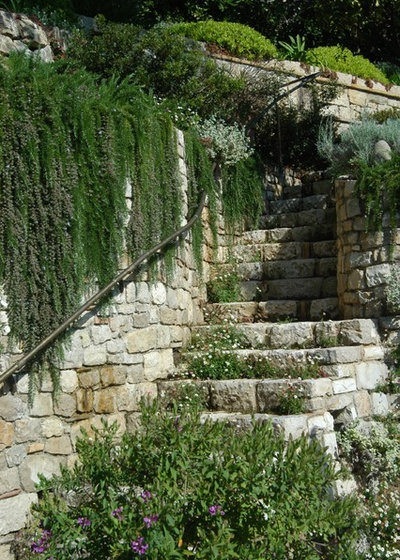
Atelier Nelumbo Garden Design
Vines. Vines may be planted within rock crevices in wall facades or along the top and allowed to cascade downward. Vines to consider include
ornamental raspberry (
Rubus calycinoides, zones 6 to 9), creeping Jenny
(
Lysimachia nummularia ‘Aurea’,
zones 3 to 9), and bougainvillea (
Bougainvillea cvs
, zones 9 to 11). Some vines can be invasive in certain areas, so be sure to do your research before planting them.
More great vines
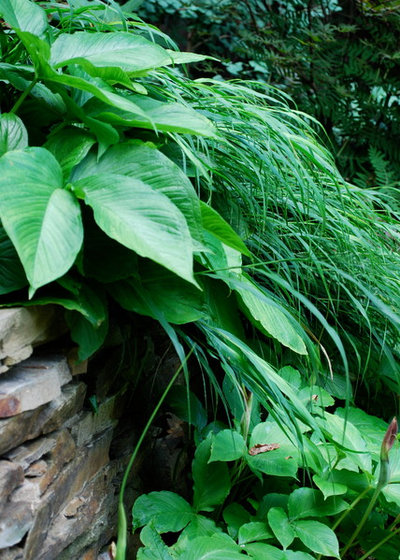
Jay Sifford Garden Design
Grasses. Many ornamental grasses are well suited for wall and crevice planting. The flowing cascading lines of certain grasses planted this way bring a peaceful vibe to a garden space. Consider
Japanese forest grass (
Hakonechloa macra cvs
, zones 4 to 9) and the many varieties of sedge (
Carex spp and cvs,
zones 5 to 10) for wall planting.
More great grasses
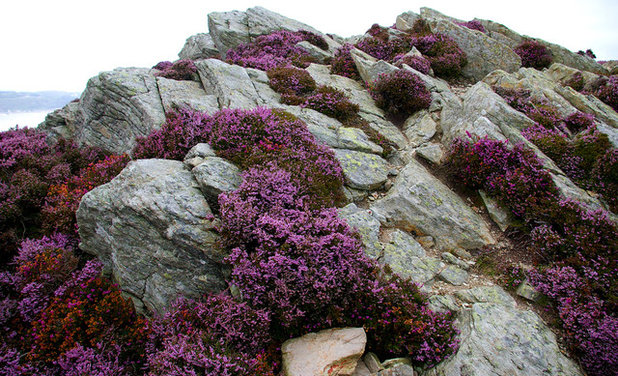
Brian Mottershead
Small shrubs. Don’t forget to consider appropriate shrubs for wall and crevice planting.
Heathers (
Calluna spp
, zones 4 to 10) and low-spreading junipers, such as
shore juniper (
Juniperus conferta cvs
, zones 5 to 9), are good choices to consider.
More great shrubs





